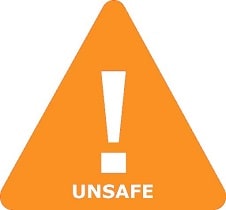Is Crixivan Safe in Breastfeeding
Question
I am a breastfeeding mother and i want to know if it is safe to use Crixivan? Is Crixivan safe for nursing mother and child? Does Crixivan extracts into breast milk? Does Crixivan has any long term or short term side effects on infants? Can Crixivan influence milk supply or can Crixivan decrease milk supply in lactating mothers?
Crixivan lactation summary

- DrLact safety Score for Crixivan is 5 out of 8 which is considered Unsafe as per our analyses.
- A safety Score of 5 indicates that usage of Crixivan may cause serious side effects in breastfed baby.
- Our study of different scientific research indicates that Crixivan may cause moderate to high side effects or may affect milk supply in lactating mother.
- Our suggestion is to use safer alternate options rather than using Crixivan .
- It is recommended to evaluate the advantage of not breastfeeding while using Crixivan Vs not using Crixivan And continue breastfeeding.
- While using Crixivan Its must to monitor child for possible reactions. It is also important to understand that side effects vary largely based on age of breastfed child and time of medication in addition to dosage.
- Score calculated using the DrLact safety Version 1.2 model, this score ranges from 0 to 8 and measures overall safety of drug in lactation. Scores are primarily calculated using publicly available case studies, research papers, other scientific journals and publically available data.
Answer by Dr. Ru: About Crixivan usage in lactation
Anti-HIV drug. It has been used to treat children older than 3 years of age.Mothers must be adviced that transmission of HIV infection through breastfeeding has been documented.
Answer by DrLact: About Crixivan usage in lactation
In the United States and other developed countries, HIV-infected mothers should generally not breastfeed their infants. Published experience with In the United States and other developed countries, HIV-infected mothers should generally not breastfeed their infants. Published experience with Crixivan during breastfeeding is limited. In countries in which no acceptable, feasible, sustainable and safe replacement feeding is available, World Health Organization guidelines recommend that all women with an HIV infection who are pregnant or breastfeeding should be maintained on antiretroviral therapy for at least the duration of risk for mother-to-child transmission. Mothers should exclusively breastfeed their infants for the first 6 months of life; breastfeeding with complementary feeding should continue through at least 12 months of life up to 24 months of life.[1] The first choice regimen for nursing mothers is tenofovir, efavirenz and either lamivudine or emtricitabine. If these drugs are unavailable, alternative regimens include: 1) zidovudine, lamivudine and efavirenz; 2) zidovudine, lamivudine and nevirapine; or 3) tenofovir, nevirapine and either lamivudine or emtricitabine. Exclusively breastfed infants should also receive 6 weeks of prophylaxis with nevirapine.[2][3]
Crixivan Possible Effects in Breastfeeding
Gynecomastia has been reported among men receiving highly active antiretroviral therapy. Gynecomastia is unilateral initially, but progresses to bilateral in about half of cases. No alterations in serum prolactin were noted and spontaneous resolution usually occurred within one year, even with continuation of the regimen.[5][6][7] Some case reports and in vitro studies have suggested that protease inhibitors might cause hyperprolactinemia and galactorrhea in some male patients,[8][9] although this has been disputed.[10] The relevance of these findings to nursing mothers is not known. The prolactin level in a mother with established lactation may not affect her ability to breastfeed.
Alternate Drugs
Nelfinavir(Unsafe)
Indinavir(Unsafe)
Efavirenz(Unsafe)
Ritonavir(Unsafe)
Tenofovir(Safe)
Didanosine(Unsafe)
Abacavir(Safe)
Zidovudine(Low Risk)
Nevirapine(Low Risk)
Lamivudine(Safe)
Saquinavir(Unsafe)
Emtricitabine(Safe)
Cefdinir(Safe)
Emtricitabine(Safe)
Streptomycin(Safe)
Econazole(Safe)
Cephradine(Safe)
Ganciclovir(Low Risk)
Erythromycin(Low Risk)
Meropenem(Safe)
Roxithromycin(Safe)
Atovaquone(Low Risk)
Mebendazole(Safe)
Cefazolin(Safe)
Paromomycin(Safe)
Cephalexin(Safe)
Clindamycin(Low Risk)
Loracarbef(Safe)
Nelfinavir(Unsafe)
Linezolid(Low Risk)
Colistimethate(Safe)
Cefadroxil(Safe)
Procaine Penicillin G(Safe)
Cefuroxime(Safe)
Indinavir(Unsafe)
Secnidazole(Safe)
Clarithromycin(Safe)
Lomefloxacin(Low Risk)
Tinidazole(Safe)
Cefaclor(Safe)
Piperacillin(Safe)
Tioconazole(Safe)
Ceftriaxone(Safe)
Azithromycin(Safe)
Levofloxacin(Low Risk)
Sulfasalazine(Safe)
Ritonavir(Unsafe)
Terconazole(Safe)
Teicoplanin(Safe)
Tenofovir(Safe)
Kanamycin(Safe)
Metronidazole(Safe)
Efavirenz(Unsafe)
Penicillin V(Safe)
Sulconazole(Safe)
Ceftibuten(Safe)
Fusidic Acid(Safe)
Acyclovir(Safe)
Dapsone(Low Risk)
Penicillin G(Safe)
Polymyxin B(Safe)
Ceftazidime(Safe)
Quinine(Safe)
Capreomycin(Low Risk)
Amantadine(Low Risk)
Bacampicillin(Safe)
Oxytetracycline(Safe)
Oxiconazole(Safe)
Cefprozil(Safe)
Pyrimethamine(Safe)
Ertapenem(Safe)
Aztreonam(Safe)
Telithromycin(Unsafe)
Naftifine(Safe)
Mefloquine(Safe)
Gentamicin(Safe)
Sulfamethoxazole(Safe)
Ampicillin(Safe)
Didanosine(Unsafe)
Ciclopirox(Safe)
Cefoxitin(Safe)
Hydroxychloroquine(Safe)
Gatifloxacin(Low Risk)
Sulfisoxazole(Safe)
Ofloxacin(Safe)
Butoconazole(Safe)
Cefotetan(Safe)
Chloroquine(Safe)
Nitazoxanide(Safe)
Abacavir(Safe)
Enoxacin(Low Risk)
Vancomycin(Safe)
Amoxicillin(Safe)
Salicylic Acid(Safe)
Norfloxacin(Safe)
Albendazole(Safe)
Cefotaxime(Safe)
Trovafloxacin(Unsafe)
Rifaximin(Safe)
Doxycycline(Low Risk)
Zidovudine(Low Risk)
Malathion(Low Risk)
Neomycin(Safe)
Ivermectin(Safe)
Tobramycin(Safe)
Oseltamivir(Safe)
Dicloxacillin(Safe)
Amikacin(Safe)
Nafcillin(Safe)
Nevirapine(Low Risk)
Lindane(Unsafe)
Cefixime(Safe)
Ticarcillin(Safe)
Chloramphenicol(Unsafe)
Demeclocycline(Low Risk)
Lamivudine(Safe)
Penciclovir(Safe)
Moxifloxacin(Low Risk)
Permethrin(Safe)
Cefepime(Safe)
Saquinavir(Unsafe)
Cloxacillin(Safe)
Valganciclovir(Low Risk)
Floxacillin(Safe)
Tetracycline(Safe)
Ciprofloxacin(Safe)
Famciclovir(Low Risk)
Methicillin(Low Risk)
Primaquine(Low Risk)
Praziquantel(Safe)
Efavirenz(Unsafe)
Ritonavir(Unsafe)
Tenofovir(Safe)
Didanosine(Unsafe)
Abacavir(Safe)
Zidovudine(Low Risk)
Nevirapine(Low Risk)
Lamivudine(Safe)
Saquinavir(Unsafe)
Emtricitabine(Safe)
Nelfinavir(Unsafe)
Indinavir(Unsafe)
Indinavir(Unsafe)
Ribavirin(Low Risk)
Efavirenz(Unsafe)
Ritonavir(Unsafe)
Tenofovir(Safe)
Zanamivir(Safe)
Acyclovir(Safe)
Amantadine(Low Risk)
Velpatasvir(Low Risk)
Didanosine(Unsafe)
Simeprevir(Low Risk)
Sofosbuvir(Low Risk)
Abacavir(Safe)
Zidovudine(Low Risk)
Ledipasvir(Low Risk)
Nevirapine(Low Risk)
Ombitasvir(Low Risk)
Oseltamivir(Safe)
Lamivudine(Safe)
Saquinavir(Unsafe)
Penciclovir(Safe)
Daclatasvir(Low Risk)
Valganciclovir(Low Risk)
Emtricitabine(Safe)
Dasabuvir(Low Risk)
Famciclovir(Low Risk)
Ganciclovir(Low Risk)
Nelfinavir(Unsafe)
Ritonavir(Unsafe)
Saquinavir(Unsafe)
Nelfinavir(Unsafe)
Indinavir(Unsafe)
